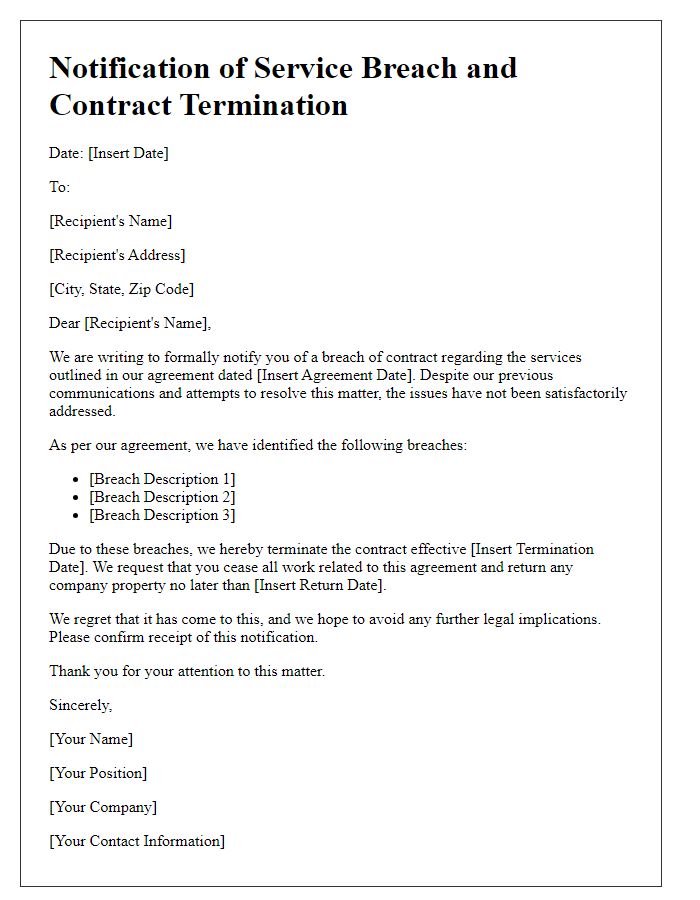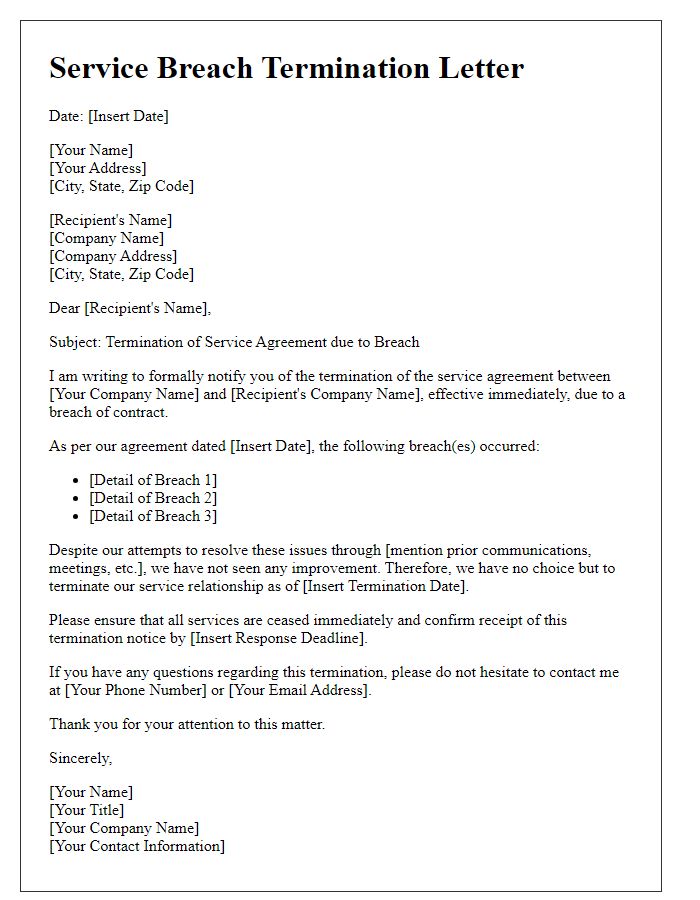Are you facing a situation where you need to address a breach of service terms? Writing a termination letter can feel daunting, but it's crucial to handle it professionally and clearly to protect your interests. In this article, we'll guide you through crafting an effective termination letter, ensuring you cover all necessary points while maintaining a respectful tone. Let's dive in and explore the best practices for addressing this sensitive issue effectively!

Clear identification of parties
A breach of service terms can lead to termination of contractual agreements, necessitating clear identification of involved parties. The first party typically includes the service provider, often legally recognized as the entity offering services under a defined agreement. Essential details encompass the full legal name, registered address, and company's registration number. The second party is generally the client or customer receiving services, with required information including their full legal name, address, and any unique identifier such as social security number or company registration number. Accurate identification facilitates clarity in legal proceedings and ensures both parties understand their rights and obligations regarding the termination process. Documentation requires formal language and explicit references to the referenced service agreement, highlighting the specific breached terms contributing to the termination notice.
Description of breached terms
The termination of a service agreement can occur due to significant breaches in the outlined terms, particularly concerning service quality and compliance protocols. For instance, failure to meet response time metrics, specified at a maximum of 24 hours for customer inquiries, can tarnish the relationship. Additionally, non-compliance with data protection regulations, such as the General Data Protection Regulation (GDPR), poses serious legal risks, including hefty fines of up to EUR20 million or 4% of annual global turnover. Another area of concern is the lack of monthly performance reporting, agreed upon in the contract, which is meant to ensure transparency regarding service delivery. Such breaches undermine the trust essential for a successful partnership, leading to the necessity for termination.
Notice and effective date of termination
Notice of termination due to breach of service terms highlights the end of a contract due to non-compliance. This notice outlines the effective termination date, often specified as 30 days from the date of the notice. The breach may include failure to meet service delivery standards, violations of agreed terms, or non-payment for services rendered. Clear reference to the specific clauses in the service agreement provides additional context, reinforcing the rationale behind the decision. Proper communication of this termination is vital to ensure a smooth transition and mitigate potential disputes arising from the cancellation of services.
Consequences of termination
Breach of service terms can lead to significant consequences, impacting both parties involved in the agreement. Upon termination of the contract, legal ramifications may include financial penalties due to non-compliance with stipulations outlined in the service agreement. Affected entities must consider potential loss of revenue, as ongoing business operations may be disrupted, causing a ripple effect in customer relationships and service delivery. Moreover, the terminated party may face reputational damage, which can hinder future business opportunities and partnerships. Additionally, unresolved disputes may result in further legal actions, including arbitration or litigation, requiring considerable time and resources. Understanding these consequences is crucial for both parties to mitigate risks and navigate the termination process effectively.
Contact information for resolution
In the event of a breach in service terms, timely awareness of contact information for resolution is essential. Companies typically designate a service representative or department for addressing such issues. For instance, customer service division contact numbers often appear prominently in service agreements. Email addresses (e.g., support@[company].com) facilitate quick communication. Response times may vary; however, prompt engagement increases the likelihood of a satisfactory resolution. Some companies also establish dedicated hotline numbers for urgent matters, often available 24/7. Written documentation of all communications serves as vital evidence should further action be required.
Letter Template For Breach In Service Terms Termination Samples
Letter template of notification for service breach and contract termination

Letter template of immediate termination of service agreement for breach












Comments